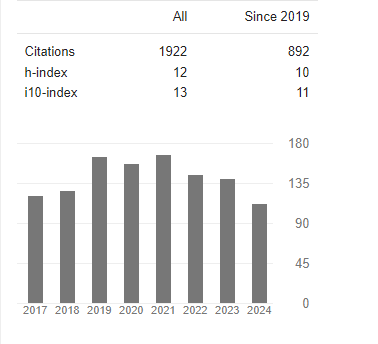Review on the Synthesis Method of Nanocomposites and Approach to Making Semiconductors Visible Light Active
Abstract
Abdu Hussen Ali
Many studies have been concentrated on the degradation of toxic organic compounds in waste water via photocatalysis of various semiconductors. It has attracted great attention in modern science because of its potential in solving many current environmental problems such as air and water pollution. The common photocatalysts are primarily nanocomposite metal oxides, are known to be good photocatalysts for the degradation of several environmental contaminants due to their high photosensitivity, stability and non-toxic nature. There are different approaches for the synthesis of nanomaterials: Top down and bottom up approaches. Top- down approach is best approach and refers to successive cutting of a bulk material to get nano sized particles. These applications have their interest in controlling particle size, particle shape, size distribution, particle composition and degree of particle agglomeration. Some nanoparticles have large band-gap which leads to high recombination rate of photogenerated electron–hole pairs limit their utilization for photocatalytic applications. More recently, significant efforts have also been made to develop new or modified semiconductor photocatalysts that are capable of using visible-light (λ = 400–700 nm) including semiconductor coupling, metal ion doping, nonmetallic element doping, and sensitization with organic dyes. Coupling of two semiconductor nanoparticles with different band gap widths has been demonstrated in many studies as one of the most effective ways to reduce the recombination of electron–hole pairs and consequently, achieving a higher photocatalytic activity. Moreover, the ternary nanocomposites have high visible light photocatalytic activity and organic dyes can be decomposed efficiently, implying the higher photocatalytic activity of the ternary nanocomposites.



